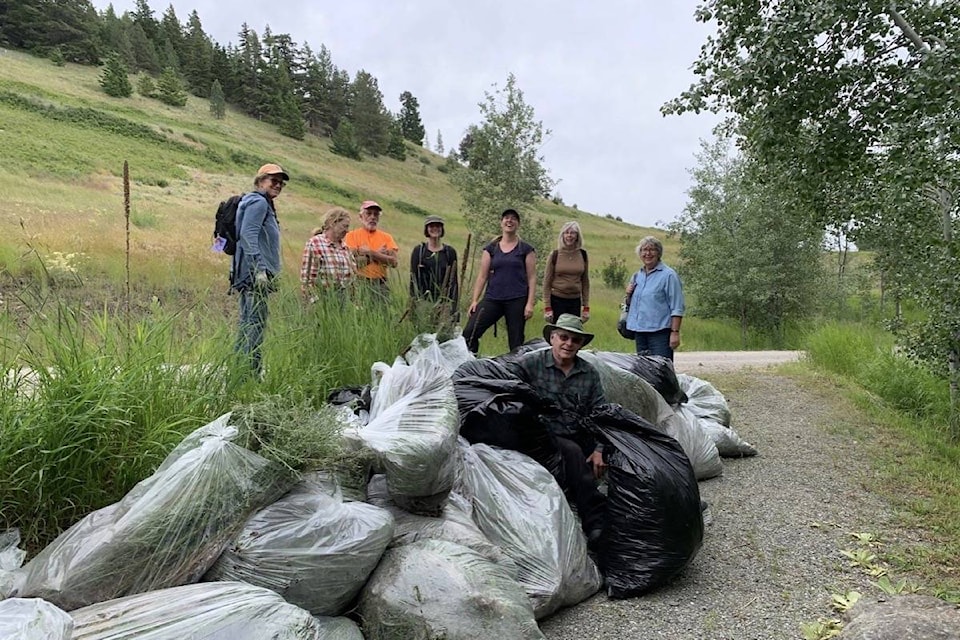By Catherine Tarasoff
Now is the time that we start seeing signs of invasive plants during our recreational activities. Sometimes it is hard to know when to pull an invasive, when to leave an invasive, and what to do if you don’t have a bag handy. Outlined below is a guideline of what to do based on the stage of development of the plant. In the following scenarios, we are assuming the plant reproduces only by seed (no rhizomes or running roots).
Early Development
When a plant is early in its stage of flower development you will see just the buds starting to swell. At this stage, it is safe to pull the plant and either leave it on-site or carry it out and dispose of it once you are home. The flowers have not opened; therefore, pollination has not occurred and seeds will not be formed.
Flowers are opened
Once the flowered are open there is no way to know if they have been pollinated or not. Therefore, once flowers are present it is not safe to pull the plant and leave it on-site, as seeds may still form. It is safe to carry pulled plants to your home if you do not have a bag.
Flowers are dry
Dry flowers contain many, if not hundreds, of seeds inside. At this stage, you must put pulled plants into a bag. If you pull a plant and then walk to your car, you will be shaking seeds along your trail like a pepper shaker. If you do not have a bag, you are best to leave the plant where it is. Make a point to return early next summer and pull up the plant, along with its seedlings, before the flowers dry.
The last point of invasive plant disposal that I am often asked is “What about burning?” Many folks have burn piles, but for invasive plants I recommend a burn pit. When ignited in a burn pile, the foliage of the plant is burned, but the seeds are left, like dust, on the ground. When the wind comes the seeds are blown across the landscape. In contrast, a burn pit ensures seeds cannot escape.
No matter where you are exploring, have fun and practice Play-Clean-Go to stop invasive species in your tracks!
COME CLEAN: Remove plants and mud from your footwear, gear, and pets before exploring.
STAY on designated trails to reduce the chance of picking up seeds and mud that carry invasive plants.
LEAVE CLEAN: Remove plants and mud from your footwear, gear, and pets after exploring.
Catherine Tarasoff is the Education and Outreach Coordinator for the Thompson-Nicola Invasive Plant Management Committee (on Facebook @TNIPMC). This season, articles are dedicated to “Stopping Invasive Species in Your Tracks! Tools and tips for preventing invasive species while enjoying the outdoors.” Look for more resources at www.tnipmc.com.
editorial@accjournal.ca
Like us on Facebook and follow us on Twitter
